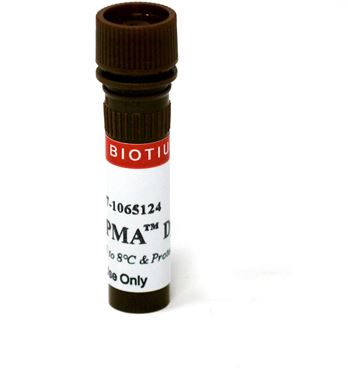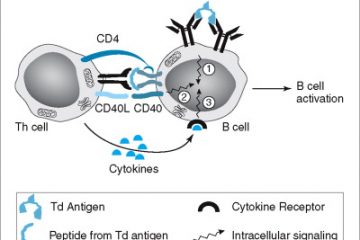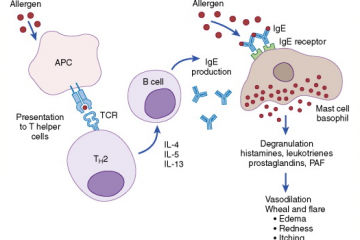PRODUCT DESCRIPTION
PMA (propidium monoazide) is a photo-reactive DNA-binding dye utilized in viability PCR (v-PCR) of microorganisms like micro organism, viruses, and fungi. PMA is on the market as a 1 mg lyophilized strong or 20 mM answer in water. Also strive PMAxx (40069), a superior different to PMA.
- Selectively detect viable cells utilizing qPCR
- Validated in a whole bunch of publications
- Dead cell particular dye, binds to DNA
- Covalently attaches to DNA after photoactivation
- Available as 1 mg lyophilized strong or 20 mM answer in water
- λAbs = 464 nm (earlier than photolysis); λAbs/λEm= ~510/~610 nm (with DNA/RNA, after photolysis)
To be taught extra about some great benefits of figuring out microbial or cell viability utilizing viability PCR, go to the Viability PCR Technology Page.

pma-propidium-monoazide
| Product | Catalog Number | Unit Size | Format |
|---|---|---|---|
| PMA Dye | 40013 | 1 mg | Lyophilized strong |
| PMA Dye, 20 mM in H2O | 40019 | 100 uL (20 mM in water) | Solution |
About PMA
PMA dye is a DNA modifier invented by scientists at Biotium. It is a photo-reactive dye that binds to DNA with excessive affinity. Upon photolysis with seen mild, PMA dye turns into covalently hooked up to DNA. This modified DNA can’t be amplified by PCR. The dye is designed to be cell membrane-impermeable. Thus, in a inhabitants of reside and useless cells, solely useless cells are prone to DNA modification attributable to compromised cell membranes. This distinctive characteristic of PMA dye makes it extremely helpful in selective detection of reside micro organism by qPCR.
Since Biotium first developed PMA dye, there have been a whole bunch of publications on the usage of the dye in lots of pattern sorts together with dozens of bacterial strains, biofilms, yeast, fungi, viruses, and eukaryotic cells. It has been utilized in such functions as meals and water security and environmental testing, and has been used at the side of qPCR, NextGen Sequencing (NGS), Sanger sequencing, and Loop-mediated Isothermal Amplification (LAMP).
A

pma cell dna
bstract
Propidium monoazide (PMA) is a extremely selective dye that penetrates solely membrane-compromised, useless microbial cells and inhibits each DNA extraction and amplification. PMA has been extensively used for discrimination between dwelling and useless microbial cells; nevertheless, the appliance of PMA in phytoplankton research has been restricted. In this research, we tried to guage its applicability for the discrimination of viable phytoplankton. We examined PMA on seven phytoplankton species, Microcystis aeruginosa, Anabaena sp., Aphanizomenon sp., Synechocystis sp., Cryptomonas ovata, Scenedesmus obliquus, and Nitzschia apiculata as representatives of the main phytoplankton taxa Cyanobacteria (first 4 species), Chlorophyta, Cryptophyta, and Bacillariophyta, respectively. Our outcomes confirmed that utility of PMA to phytoplankton dwelling in freshwater has the potential to tell apart viable from useless cells as in microbial research. Particularly, PMA differentiated viable from useless cells in cyanobacterial species moderately than in different phytoplankton taxa beneath our experimental situations. However, our outcomes additionally confirmed that it might be essential to regulate varied situations affecting PMA therapy effectivity to develop its applicability to different phytoplankton. Although all components contributing to the consequences of PMA couldn’t be evaluated, our research confirmed the applicability of PMA-based molecular approaches, which could be handy quantitative strategies for distinguishing dwelling from useless phytoplankton in freshwater ecosystems. Setting optimum therapy situations for different phytoplankton species could improve the efficacy of PMA-based molecular approaches.
[Linking template=”default” type=”products” search=”Propidium Monoazide” header=”3″ limit=”14″ start=”1″ showCatalogNumber=”true” showSize=”true” showSupplier=”true” showPrice=”true” showDescription=”true” showAdditionalInformation=”true” showImage=”true” showSchemaMarkup=”true” imageWidth=”” imageHeight=””]


